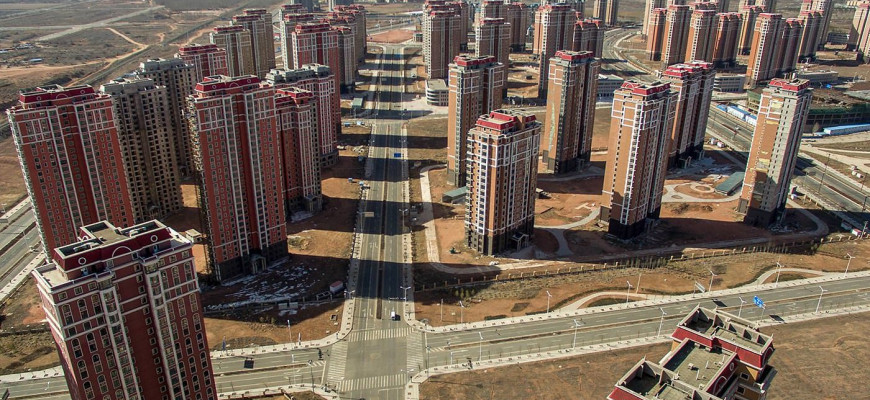In the vast expanse of Inner Mongolia, an urban experiment of epic proportions was conceived, giving rise to Kangbashi, a city that seems to defy the rules of urban development. Often labeled as a “ghost city,” Kangbashi stands as an intriguing, ambitious, and complex phenomenon that offers a unique lens through which to view the evolving narrative of China’s urbanization. In this article, we delve into the fascinating story of Kangbashi. Kangbashi’s story begins in the early 21st century when the Chinese government initiated a colossal urban development project. The vision was to create a modern, sustainable, and ecologically friendly city from scratch. Kangbashi was intended to be a model city, showcasing China’s prowess in urban planning, infrastructure, and environmental sustainability. Kangbashi’s development included grand avenues, imposing skyscrapers, and state-of-the-art infrastructure.

However, the city faced a peculiar predicament – it was built before the residents arrived. The grand architecture, wide boulevards, and towering apartment complexes stood in stark contrast to the deserted streets and vacant apartments, giving Kangbashi its “ghost city” reputation. Several factors contributed to Kangbashi’s empty streets. Economic pressures, a high cost of living, and limited job opportunities in the city deterred many from relocating. Moreover, its distance from established urban centers and limited public transportation options posed challenges. Kangbashi’s grandiosity and modernity are reflected in its sustainable infrastructure, including energy-efficient buildings and abundant green spaces. While the city may not have attracted the intended number of residents, it has gained popularity as a tourist destination, drawing visitors eager to explore its contemporary architecture and empty streets.

Kangbashi’s story is far from over. Over time, the city has witnessed a slow influx of residents and commercial activity. As its urban fabric continues to evolve, Kangbashi’s future remains an intriguing subject of observation and analysis. Kangbashi, China, is more than just a “ghost city”; it is a compelling symbol of urban ambition, experimentation, and the complexities of modern urbanization in a rapidly evolving nation. The city’s enigmatic allure lies in its intriguing contrast between grandeur and emptiness, offering an ever-evolving narrative of China’s urban development. Kangbashi remains a symbol of ambition, transformation, and the ongoing pursuit of a vision for a modern, sustainable urban future.
